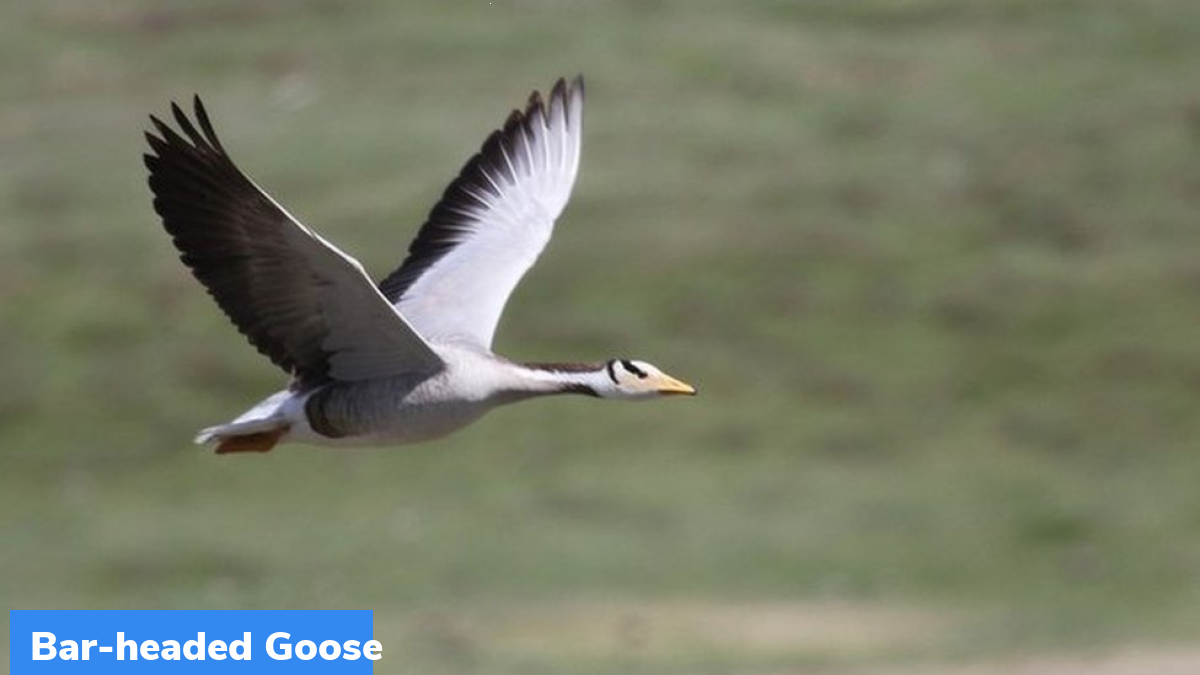Bar-headed Goose
The bar-headed geese were spotted at Rushikulya in Odisha’s Ganjam.
About bar-headed goose
- The bar-headed goose (Anser indicus) is considered to be one of the world’s highest-flying birds.
- Native to Central Asia, this species is capable of flying through the passes of high mountains at an altitude of 12,000 to 14,000 feet.
- It spends the winters in South Asia, as far south as peninsular India. It migrates south from Tibet, Kazakhstan, Mongolia, and Russia before crossing the Himalayas.
- Its preferred winter grounds are freshwater marshes, lakes, streams or river wetlands, mountain grasslands, cultivated fields, or flooded agricultural areas.
- It is easily distinguished by the presence of black bars on its head, from which it gets its common name.
- The species lays 3 to 8 eggs in a ground nest at a time. It usually breeds in Central Asia in colonies of thousands close to mountain lakes.
- It is capable of passing the highest mountains, where winds blow at speeds of more than 322 km per hour and the temperature is low enough to freeze exposed flesh instantly.
- It survives this extreme journey through the powerful and constant flight that helps the body generate heat, which is retained by down feathers. The species also has a special type of hemoglobin that can absorb oxygen more quickly than other birds.
- These unique features allow the bar-headed goose to migrate more than 1,609 km in a single day.
About Rushikulya River
The Rushikulya River is one of the major rivers in Odisha, covering the entire catchment area in the districts of Kandhamal and Ganjam. It originates at an altitude of 1,000 meters from Daringbadi hills of the Eastern Ghats. It drains into the Bay of Bengal in Ganjam’s Puruna Bandha. Some of its tributaries are Baghua, the Dhanei, the Badanadi etc.
Over the past few days, around a thousand bar-headed geese flocked to the Rushikulya river. This river is one of the preferred winter grounds for the geese for the past seven years.
Month: Current Affairs - December, 2022
Category: Environment Current Affairs • Places in News Current Affairs


